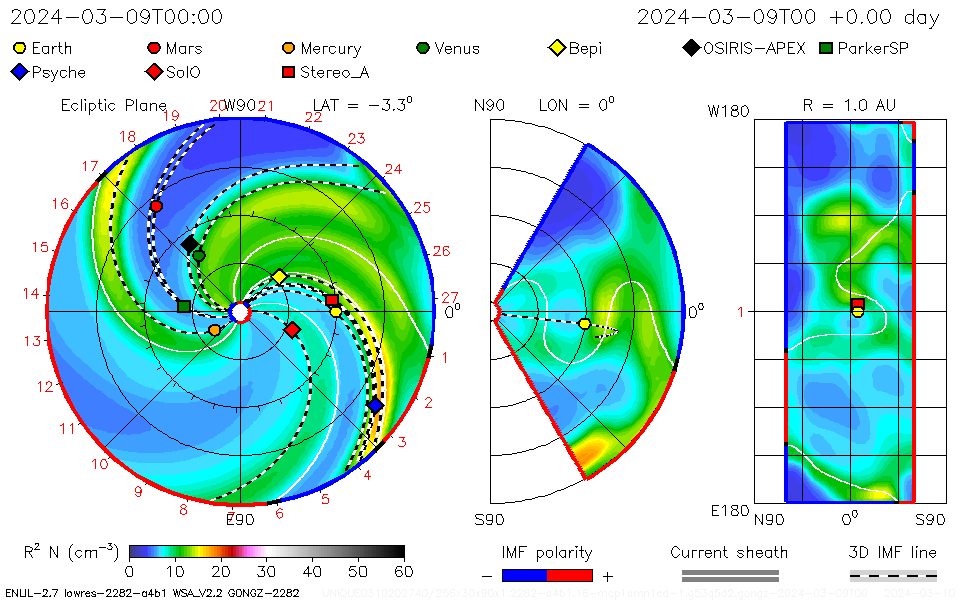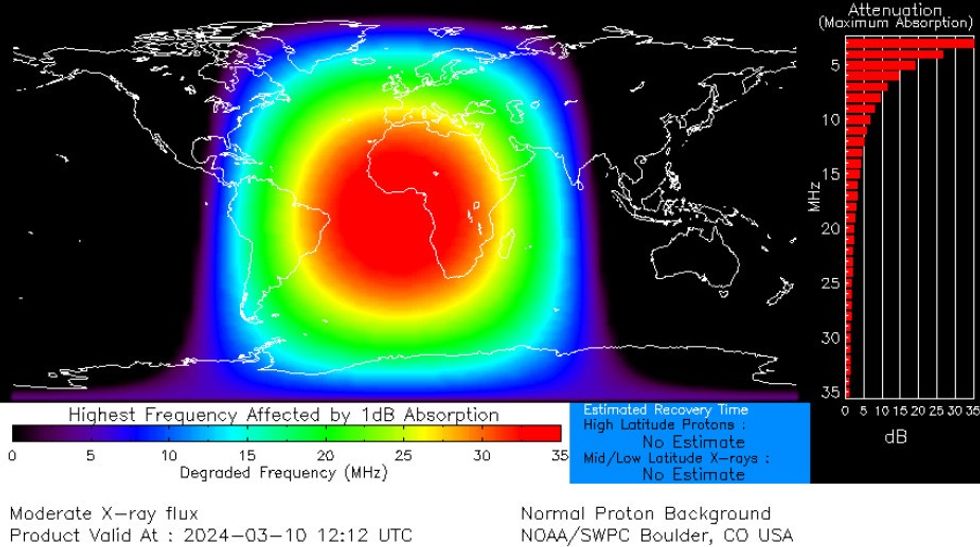A solar flare unleashed by the Sun is currently hurtling towards Earth – and could herald “geomagnetic storm conditions”, astronomers have said.
The flare is one of several which have burst out of one of our nearest star’s ‘sunspots’ – a spot named AR3599, to be precise – in the last few days.
At 12.13pm GMT on Sunday, AR3599 produced a M7.4 class solar flare – Nasa’s second-highest class band – which took observers by surprise.
Eight minutes later, large-scale shortwave radio blackouts could be felt across Africa and the southern Atlantic Ocean.
Nasa impressions of a solar flare show just how dramatic the surface of the Sun can be
Nasa
Mariners and amateur radio operators in the affected area would have lost signal for as long as 30 minutes after the initial flare.
Radio blackouts after solar flares are to be expected; when one erupts, any parts of our planet facing the sun are blasted by X-rays and UV radiation at the speed of light, which takes eight minutes to travel between the Sun and the Earth – hence the delay.
Travelling behind the initial radiation blast is a coronal mass ejection, a release of plasma from the surface of the Sun which is currently heading our way at 1.7 million miles per hour – a mere fraction of the speed of light.
The brunt of this ejection is set to just miss Earth, but the edge of the blast should catch us on March 13 – heralding a G1-class geomagnetic storm.
LATEST DEVELOPMENTS:

Nasa modelling shows the solar shockwave (outlined in black) delivering a glancing blow to Earth (yellow circle)
Nasa
Thankfully, G1 is the lowest storm classification available, but it can bring “weak power grid fluctuations”, affect migratory animals, and have a “minor impact on satellite operations”, according to the United States’ National Oceanic and Atmospheric Administration (NOAA).
Solar flares are set off by a buildup of magnetic energy in the solar atmosphere; at a certain point, this energy is released across the stars in a burst of radiation – like the one which took out radio systems on Sunday.
A geomagnetic storm is the result of the interaction between a solar flare’s coronal mass ejection and the Earth’s magnetosphere – the region of space around our planet directly affected by our magnetic field.
The ejection, which brings a solar wind shock wave, compresses the magnetosphere which causes radar disruption and ‘auroral displays’ like the Northern or Southern Lights at latitudes closer to the equator.

Further modelling showed the hotspot over Earth, which knocked out radio comms for half an hour on Sunday
Nasa
The largest ever recorded geomagnetic storm – 1859’s ‘Carrington Event’, destroyed parts of the US’s freshly-built telegraph network, causing fires and even delivering electric shocks to workers.
If a storm the size of the Carrington Event were to happen today, Earth could expect electrical disruptions, blackouts and telecommunications damage across the world.
But disruptions like Sunday’s are surprisingly common; two hit our planet in January, which caused blackouts and radio disruption in Australia and across the Pacific.
Physicists observed the solar storm also affected high-frequency radio communications near the equator and in parts of South America.
Source Agencies



